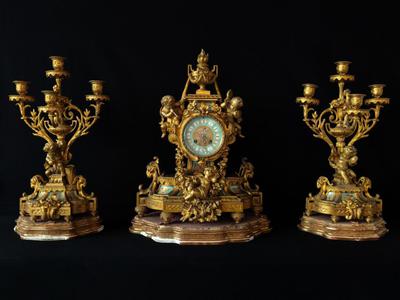Timepieces & Treasures from the Estate of Sir Mangaldas Nathubhai
If the porcelain of the previous chapter revealed Sir Mangaldas Nathubhai’s eye for refinement, the timepieces and sculptural treasures in the family capture the rhythm and sentiment of his world. Within the family homes at Girgaum, Malabar Hill, and later Commonwealth, these pieces measured the passing of hours and reflected the family’s cosmopolitan curiosity. Passed down and faithfully wound through four generations, they speak of precision, devotion, and inherited grace.
Read More
















